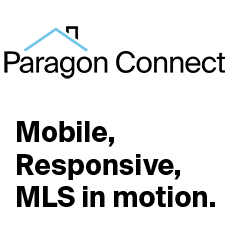Awhile back I was asked to give a presentation about the “history of MLS technology”, at a MLS strategic planning session. I spent a lot of time on it and I liked what I had put together. I’ve been using parts of that presentation, and how it fits in with W+R Studios’s “front end of choice” product, Cloud MLX.
The video is about 20 minutes long. It’s not too polished, I have a few flubs, some “umms” and “ahhhs”, but overall I think the video does a good job of showing our thinking about Cloud MLX.
I would love to get any feedback you might have. Enjoy.

I think the evolution of the MLS frontend has been slow over the years not because the technology hasn’t been there but because MLS vendors have not wanted to use newer coding languages and scripting. They suffer from what I have been quoting as BlackBerry syndrome. They choose to keep the same stale UI/UX.
I don’t know how to code but my guess is these systems were built on some big box foundation and went from there. That’s great if you want to get up and running quickly but that avenue comes with a price down the road when you need to make changes. They come at from the angle of complexity.
There is a quote I love from the book “Insanely Simple: The Obsession That Drives Apple’s Success” by Ken Segall – “Complexity is easy, simplicity is hard work. The audio version of this book should be on everyone’s mobile device.
Matrix is due to introduce the latest version of their platform later this year. I would be shocked if it isn’t just a version with bigger fins on the same old car.
W+R studios aside, wouldn’t it be wonderful if one of these MLS vendors had a skunkworks where for the last four years, they had been toiling away with some fresh new code and are ready to roll out a knock-your-socks-off MLS product! Probably not. The people there probably held on to their BlackBerrys to the bitter end.
Change on a mass scale is possible. In the 2001 Apple switched to an entirely new operating system. In 2014 Apple introduced Swift, it’s own coding language for developing applications across it’s entire line of products. This is why we should not accept mediocre dated products from MLS vendors.
On a brighter note, I have been using Cloud MLX on my website. I made a saved search of active listings for every city in the Orange County MLS. I then made a list of those cities on my website with a link to that respective search. Since the links are persistent and don’t expire (unlike Matrix), it is a constantly updated list of every active listing in Orange County sorted by city. It’s not exactly an IDX but still pretty cool.
Greg’s presentation gave me an idea for taking Solds and making farm specific updates on a website. I’ll have to experiment though. If the Months Back feature is persistent, then the search would be a constantly updated list of Sold properties for any given farm.
Thanks Greg
I have one other thought, and that is the fragmentation of services within MLS and AOR benefit offerings. That fragmentation I believe is due in part to the lack of vision on the part of real estate tech vendors which includes MLS vendors.
Thankfully there are some pretty imaginative folks out there to fill the gaps. Some of them are provided by agents that didn’t like the status quo. I can think of three to five real estate tech solutions off the top of my top of my head that came from agents turned developers. Most if not all of those agents don’t know how to code, but found someone that could and followed their vision.
To be fair, it’s monumental task for MLS and AORs to make the right tech decisions. No sooner do your pick a piece of tech, than something better comes along. But at that point your are stuck with the contact for a few years. Not to mention the politics. It’s a tough road.
I think Cloud MLX is excellent. Was super impressed the first time I saw it and it solves a huge pain point for us. I hope we get to revisit at some point soon when it makes the most sense. I would love to see the CMA move into the same interface as MLX and become a digital CMA of record (sortable, searchable, but a sticky list) augmenting any paper copies that were generated. Anyway, this video is awesome and definitely should explain the concept to others really well if they’re not getting it right away. Right now agents sometimes use saved searches and hotsheets in the mls software itself, but don’t like it much. Or, they’re hacking our collaborative search products meant for customers and saving those searches as a ghost customer. Neither is optimal. Cloud solves this. Even better if W&R continues its integration first mindset, I can see this playing nicely with other transaction and crm related software. Keep going!
This looks amazing. We have the CloudCMA product in my area, but we don’t have access to CloudStreams or CloudMLX yet. Please look again at Nashville. We are in a tech desert here. We don’t have RealScout, HomeSpotter or any other interactive buyer tools.